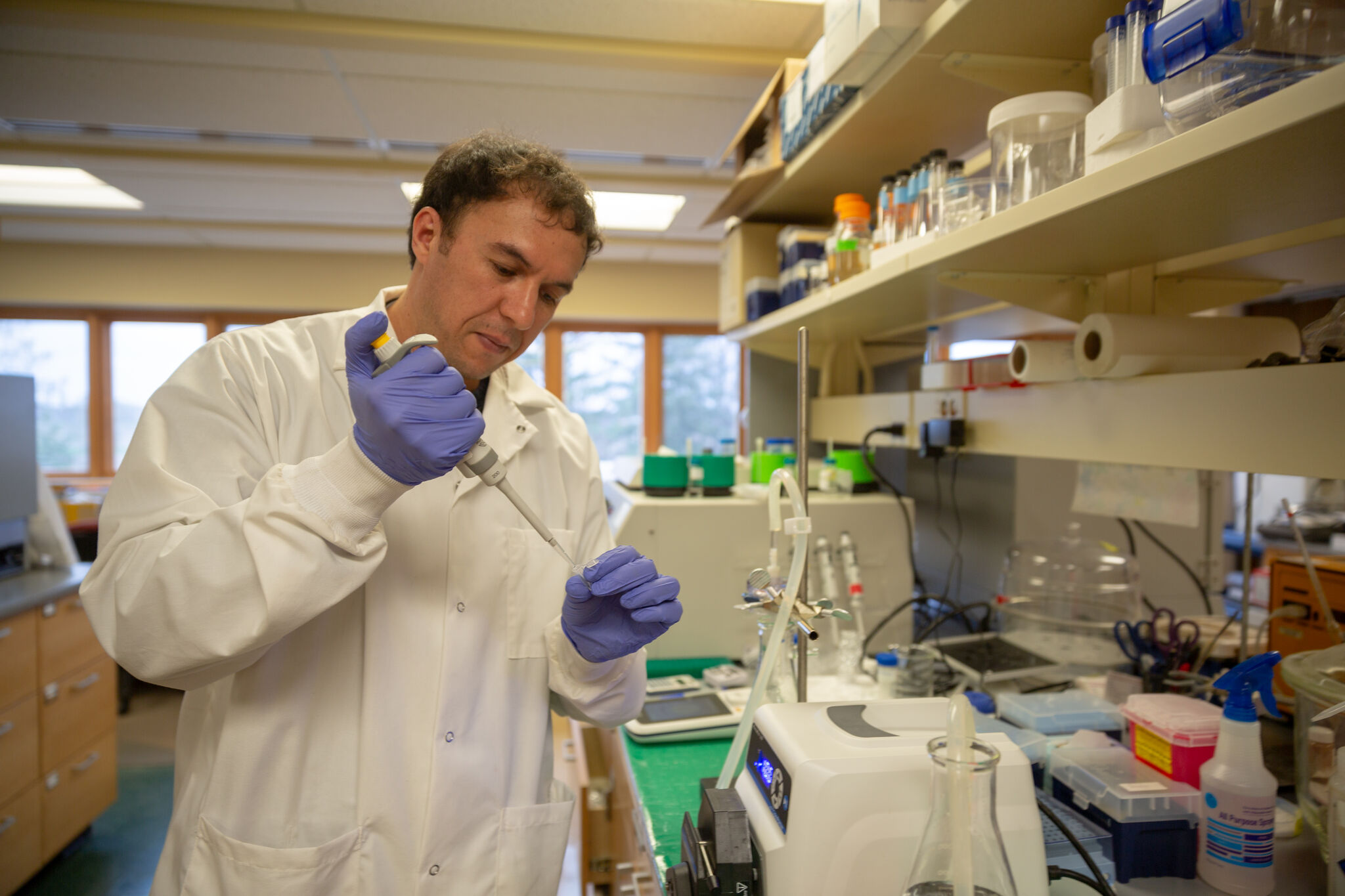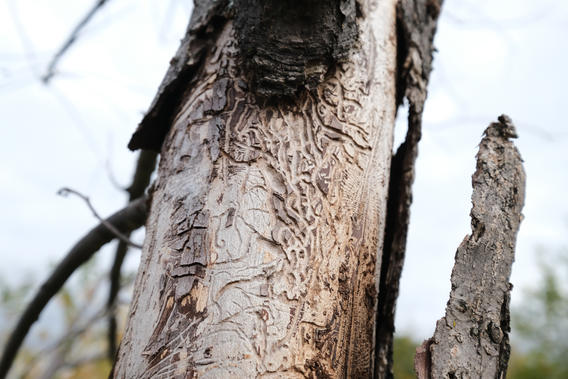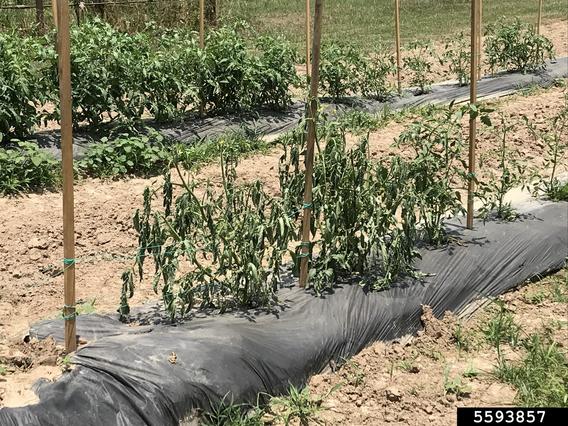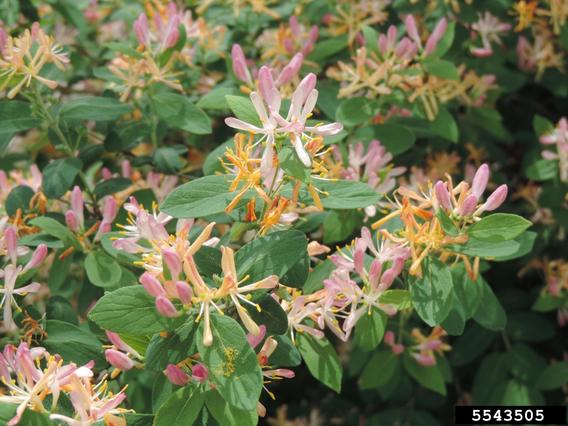February 13, 2024
The Minnesota Invasive Terrestrial Pests and Plants Center launched an additional 13 research projects in January, 2024! Since 2015, MITPPC has sponsored 40 completed projects and has 26 projects in progress. We thank the Environment and Natural Resources Trust Fund as recommended by the Legislative-Citizen Commission on Minnesota Resources for supporting this work.
New lines of research will investigate some of the most pressing issues in terrestrial invasive species. Scientists are working on early detection of destructive forest pathogens, finding environmentally-friendly solutions to agricultural pests, and using technology like remote sensing to detect and monitor threats. There’s a lot happening at MITPPC!
The new projects will take place over the next several years. To get updates along the way, sign up for our newsletter and follow us on Facebook and LinkedIn.

Natural resource projects
Portable diagnostic platform for early detection of plant pathogens
- Led by Abdennour Abbas, Department of Bioproducts and Biosystems Engineering, College of Food, Agricultural and Natural Resource Sciences (CFANS)
- This team is working to establish a versatile and portable diagnostic platform for the detection of invasive forest and plant pathogens afflicting the Midwest such as oak wilt, Dutch elm disease, corn tar spot, aster yellows, and more.
Jumping worm induced soil erosion
- Led by Kyungsoo Yoo, Department of Soil, Water, and Climate, CFANS
- Researchers will assess state-wide risk of jumping worm induced soil erosion, and develop recommendations for effective erosion control measures.

Dutch elm disease-resistant elm selection and reintroduction program
- Led by Benjamin Held, Department of Plant Pathology, CFANS
- While Dutch elm disease has devastated American elm populations, researchers have discovered natural resistance to the disease in some survivor trees. Researchers will build on previous work, propagating disease-resistant trees to repopulate elms in Minnesota.
Biosurveillance of invasive pathogens of woody plants in Minnesota
- Led by Robert Blanchette, Department of Plant Pathology, CFANS
- Plant pathologists will set windsock spore traps across Minnesota to detect invasive forest pathogens such as Phytophthora, oak wilt, Heterobasidion Root Disease, and others. The goal is to give land managers the information they need to detect diseases and proactively manage any infections to prevent further spread.
Detecting invasive tree diseases using spaceborne phenological observations
- Led by Vinicius Marcilio da Silva, Department of Ecology, Evolution and Behavior, College of Biological Sciences
- Researchers will use remote sensing for detecting and mapping trees infected by oak wilt and Heterobasidion Root Disease. The information gathered will provide a cost-effective and efficient means of early disease detection to help managers slow and prevent pathogen spread.
Spatiotemporal dynamics of Phragmites invasion and management
- Led by Joseph Knight, Department of Forest Resources, CFANS and Dan Larkin, Department of Fisheries, Wildlife, and Conservation Biology, CFANS
- Building on previous research, this team will provide land managers the ability to map and monitor Phragmites over large areas and long intervals, especially characterizing the development and expansion of Phragmites in the state.
Using eDNA to identify presence of terrestrial invasive species
- Led by Jessica Sieber, Swenson College of Science and Engineering, University of Minnesota, Duluth
- By sampling bird and mammal gut and fecal contents, researchers will use eDNA to detect the presence of invasive species. This project aims to develop protocols for using eDNA that could be used by land managers to detect arrival, monitor spread, and identify the current distribution of invertebrate invasive species.
Agricultural projects

Assessing the behavior of bacterial wilt disease in alternate hosts
- Led by Devanshi Khokhani, Department of Plant Pathology, CFANS
- This research will help with the management of potato brown rot (Ralstonia solanacearum, race 3, biovar 2) by learning the conditions that favor colonization of alternate plant hosts and how best to detect and track it.
Linking soybean aphid losses to technology investment decisions
- Led by Philip Pardey, Department of Applied Economics, CFANS and GEMS Informatics Center Director
- Researchers seek to estimate the long-term potential damage and distributions of soybean aphid across the state. The information may be useful to government and state agencies, crop commodity groups, and other researchers to help determine how to use management resources effectively.
Harnessing host plant resistance for Japanese beetle control measures
- Led by Brandon Miller, Department of Horticultural Science, CFANS
- Horticulture scientists plan to develop new foliar sprays using natural host plant resistant compounds, which could lead to less damaging and more effective control measures for Japanese beetles.
Deep learning and remote sensing for mapping invasive species
- Led by Ce Yang, Department of Bioproducts and Biosystems Engineering, CFANS
- Researchers will develop a dual-level remote sensing approach for monitoring invasive species in Minnesota, specifically studying Palmer amaranth, spotted knapweed, and Canada thistle. They aim to provide timely information to growers and legislators to enable effective management decisions.

Informing management of invasive honeysuckle and spotted-wing drosophila
- Led by Alan Smith, Department of Horticultural Science, CFANS
- Invasive, hybridizing honeysuckles threaten natural areas, and may be a host plant for the spotted wing drosophila, an enemy of agricultural crops. Researchers aim to determine genetic identity of honeysuckles in Minnesota, which may lead to better risk assessment, management, and regulation.
Assessing samurai wasp biocontrol for brown marmorated stink bug
- Led by George Heimpel, Department of Entomology, CFANS
- The non-native samurai wasp is a known predator of the invasive brown marmorated stink bug, but its use as a biological control agent has many unknowns. Entomologists will uncover the benefits and risks of the samurai wasp including how it may affect native insect species.
Apply for funding
Are you interested in working with MITPPC? We have a request for proposals from now through April 30, 2024. There is $3.75 million available in funding. UMN faculty, staff, and postdocs are eligible to apply as principal investigators.
We’d love to hear from you!
Get updates from MITPPC
Hear the latest research updates by signing up for our monthly newsletter and following us on Facebook and LinkedIn.